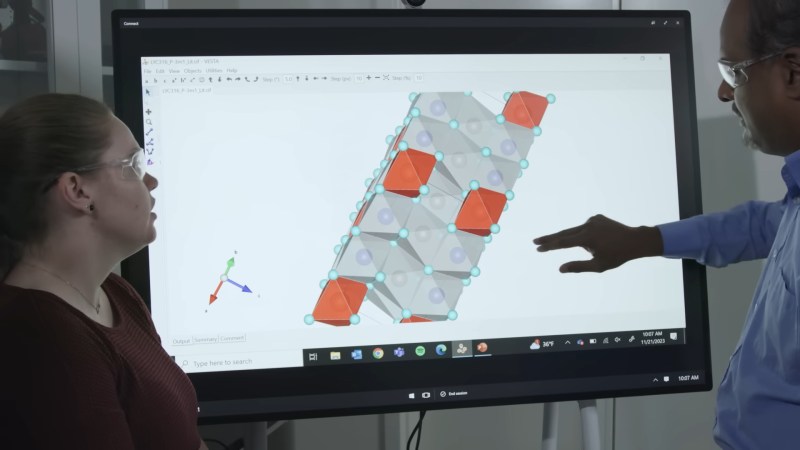While certain dystopian visions of the future have humans power the grid for AIs, Microsoft and Pacific Northwest National Laboratory (PNNL) set a machine learning system on the path of better solid state batteries instead.
Solid state batteries are the current darlings of battery research, promising a step-change in packaging size and safety among other advantages. While they have been working in the lab for some time now, we’re still yet to see any large-scale commercialization that could shake up the consumer electronics and electric vehicle spaces.
With a starting set of 32 million potential inorganic materials, the machine learning algorithm was able to select the 150 most promising candidates for further development in the lab. This smaller subset was then fed through a high-performance computing (HPC) algorithm to winnow the list down to 23. Eliminating previously explored compounds, the scientists were able to develop a promising Li/Na-ion solid state battery electrolyte that could reduce the needed Li in a battery by up to 70%.
For those of us who remember when energy materials research often consisted of digging through dusty old journal papers to find inorganic compounds of interest, this is a particularly exciting advancement. A couple more places technology can help in the sciences are robots doing the work in the lab or on the surgery table.

















Robots controlled by AI looking for batteries in the lab or the surgical table? What could possibly go wrong here!
One battery to another battery: did you see the woman in the red dress?
Mouse to Neo :-) These are organic batterys :-)
Can we first find a substitute for radio solder that melts at 190°C? These ‘new’ lead free solder isn’t my stuff.
I second this …
Just stick with rosin core lead solder. Works fine on everything I’ve ever soldered… Why rock the boat.
Use more flux and skill, you’ll get used to it. We should value not distributing more lead to our children.
“Current” darlings of battery research. Nice job.
It has potential.
With the help of a.i. i shoulf be able to find the secret ingredient of mr.
crabs burger pattys ingredient.
It’s promising that it found a similar solution than what scientists are already trying. That’s saying it might work.
It’s depressing that it didn’t find anything other than what scientists are already trying. That’s saying it either didn’t find any significant improvements given these boundary conditions, or couldn’t find anything better because there just isn’t.
Sodium batteries have properties that are very similar but somewhat crappier than lithium batteries. The only advantage is that they cost about half as much, which isn’t that great of an advantage. Instead of being ludicrously expensive, they’re only ridiculously expensive for most interesting uses.
Natrium.
The iron sulfur redox flow batteries have promise, but like anything else its a tradeoff. They’re supposed to last 20+ years but can’t charge/discharge quite as fast.
They also don’t turn into a toxic delta fire if you poke a hole in them. ESS out of Oregon is doing better than a kilowatt-hour of storage in less than a thousand square feet of space.
Gee, maybe we’ll be able to get EV batteries that will let you drive more than 3′ (.9144 m) when the when it gets below 32F (0C)!
Huh, mine seemed to work fine at -20C
Don’t let them know the secret is putting humans in pods.